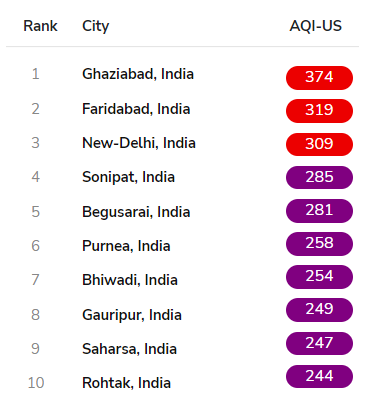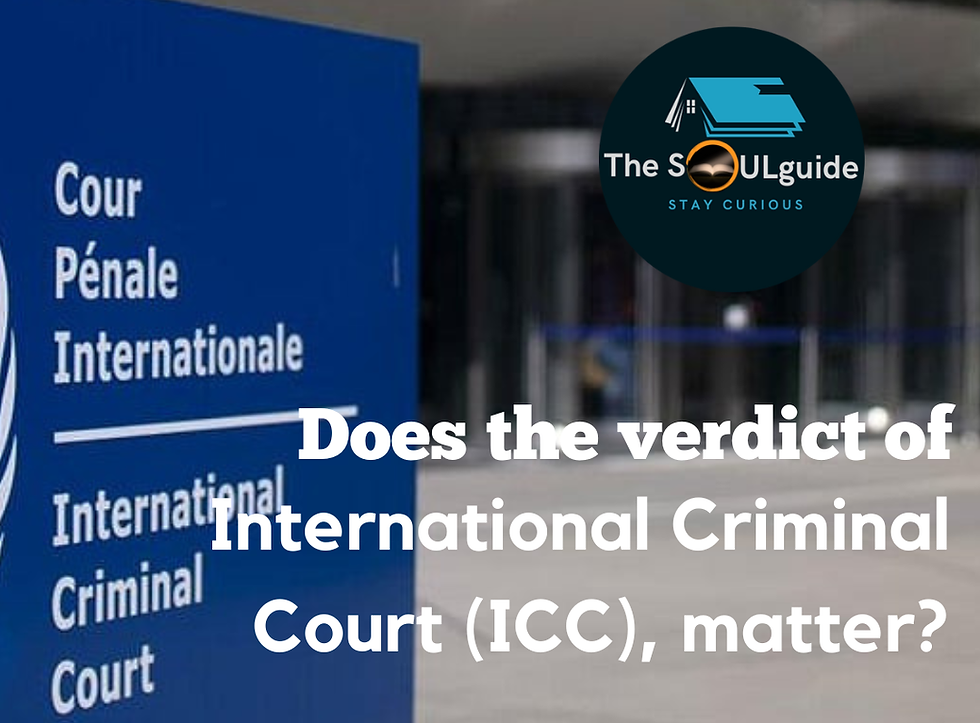Pollution and poor air quality, and its impact on our lives?
- TheSoulGuide

- Oct 30, 2022
- 4 min read
Updated: Oct 19, 2024
We hear every now and then in news that the air quality in India, Bangladesh and South Asian nations hasn't been quite good and it gets worse in October and November especially close to festive season. Sad reality is that political parties play blame game, and the people of this country forgets about it after one or two weeks or a month of worst air quality. The air pollution is biggest cause of premature deaths and diseases and is the largest environmental threat leading to climate change.
Rising above politics this needs a serious solution as it is not only about the bad publicity outside India but huge health and economic losses. (Also read, how India is doing on Global hunger index)
Even the pollution hasn't only stayed in air but the rivers of India whom we worship such as the Yamuna and Ganga are in not so good state, every year thousands of pilgrims visit the Ghats to celebrate festivals and leave these places in poor state after that and nobody looks after them.
Let's try to understand the aspects of air quality and its impact.
What is Air Quality and how is it measured?
It is the condition of Air in our surrounding and we refer it as bad when the smoke, dust and smog, among other gaseous impurities in the air increases. Human health and the life of animals, plants and biodiversity adversely get affected when the air quality is poor.
Air quality is measured with the Air Quality Index, or AQI. The AQI works like a thermometer that runs from 0 to 500 degrees and show changes in the amount of pollution in the air.
AQI tracks five major air pollutants:
Ground level ozone
Carbon monoxide
Sulfur dioxide
Nitrogen dioxide
Airborne particles, or aerosols
The Airborne particles become airborne at construction sites, smokestacks, car exhaust pipes, wildfires, volcanoes and many other places, too. The particles can also be formed from chemical reactions in the atmosphere.
Ground level ozone poses the greatest risk and is bad for human health. It is created when sunlight reacts with certain chemical emissions (for example nitrogen dioxide, carbon monoxide and methane). These chemicals can come from industrial facilities, car exhaust, gasoline vapors and other sources.
The air quality is said to be worse according to following parameters as shown in figure below.

Source: airnow.gov
Major sources of Air pollution in India
Stubble burning in North India: Farmers in states like Punjab, Haryana, western Uttar Pradesh and some parts of Rajasthan burn crop residue to clear fields to grow future crops. Majorly the farmers of Punjab have been burning it and due to recent political show down of farm bills withdrawal by the Modi government, the farmers in Punjab are every now and then on protest, blocking the roads and disturbing daily traffic and local people.
Due to the stubble burning Delhi turns into gas chamber every year but people forget it after some time, and nobody bothers later.
Vehicle and Industry pollution: This is another major reason as the industries release toxic gases and chemicals that pollutes the water and the air. They release PM 2.5 and pollute the cities. there are strict laws dealing with these but every year it's the same story and these industries employ lakhs of workers as well due to which the government is forced to not take actions.
Biomass burning for cooking: Biomass that is wood and coal remains the major fuel used for cooking food in rural India. This harms the woman health and government had started schemes to tackle this such as giving free cylinders and subsidies and distributing
cooking stoves but this still remains a problem as at many places people find it difficult to change their way of living.
Buring Coal to generate energy: Coal has been a major menace both for increasing imports and pollution in India. It is still heavily used to generate electricity and release PM 2.5 emissions.
Related Article- Read about Climate change and rising natural disasters.
Lack of awareness and poor implementation of National Clean Air Programme launched in 2019 to cut PM 2.5 and PM 10 emissions in 102 cities. Unregulated and unaccounted sources of pollution such as landfill, brick kilns, loose soil and waste dumping and considerable growth of urban and built-up area and rising population during the recent decades.
Roadside burning of organic and plastic waste and some natural sources include volcanic eruption, windstorm dust. Some Indoor air pollutants such as cigarette smoke, mold, dust mites, pet dander, formaldehyde, volatile organic compounds (VOCs) and radon gas.
Impact of poor air quality
The World Bank estimates that India's air pollution costs the country as much as 8.5 per cent of its gross domestic product.
1.7 million deaths in India were attributable to air pollution in 2019, which was 18% of the total deaths in the country.
Death rate from outdoor ambient air pollution has increased during this period by 115% from 1990 to 2019.
Economic loss due to lost output from premature deaths and morbidity from air pollution was 1.4% of the GDP in India.
Deaths due to ambient ozone pollution increased by 139·2% (96·5–195·8).
The economic loss as a proportion of the state GDP varied 3·2 times between the states, ranging from 0·67% (0·47–0·91) to 2·15% (1·60–2·77), and was highest in the low per-capita GDP states of Uttar Pradesh, Bihar, Rajasthan, Madhya Pradesh, and Chhattisgarh.
Delhi had the highest per-capita economic loss due to air pollution.
With inputs from: http://www.thelancet.com/journals/lanplh/article/PIIS2542-5196(20)30298-9/fulltext
Current AQI at Indian cities (as of 2023)
Check full list at: www.aqi.in/real-time-most-polluted-city-ranking

Hopefully the issue of air pollution seen as a serious matter as nobody wants to breathe poison. Together it is contributing to climate change and could affect India in reaching its COP 26 targets.
Stay tuned for more.
Get membership to feature you article. Check here.




Comentários